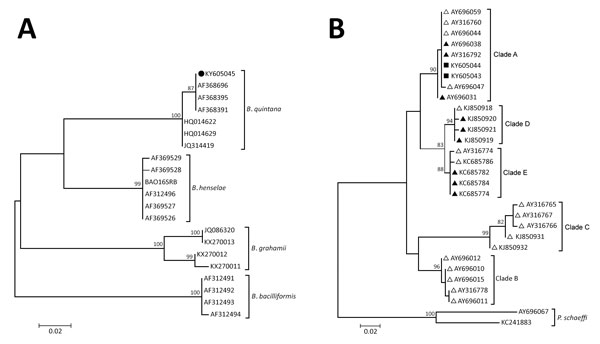Volume 23, Number 11—November 2017
Dispatch
Bartonella quintana and Typhus Group Rickettsiae Exposure among Homeless Persons, Bogotá, Colombia
Figure 2

Figure 2. Maximum-likelihood (ML) analyses of intergenic transcribed spacer 1 genes of Bartonella spp. and of the Pediculus humanus humanus louse mitochondrial cytochrome b (cytb) gene. A) Bartonella spp. analysis. The tree with the highest log likelihood is shown, and ML bootstrap values >80 are indicated at each node. The tree is drawn to scale. Sequences are indicated by GenBank accession number; solid circle indicates the sequence retrieved in this study. The Bartonella species is indicated to the right of each branch. B) P. h. humanus analysis. The tree with the highest log likelihood is shown, and ML bootstrap values are located above the node. The tree is drawn to scale. The body louse sequences (solid triangles), head louse sequences (open triangles), and GenBank accession numbers are indicated. Cytochrome b sequences from Pediculus schaeffi were used as outgroups. Solid squares indicate the sequences retrieved in this study. The mitochondrial clade is indicated to the right of each branch. Scale bars indicate nucleotide substitutions per site.